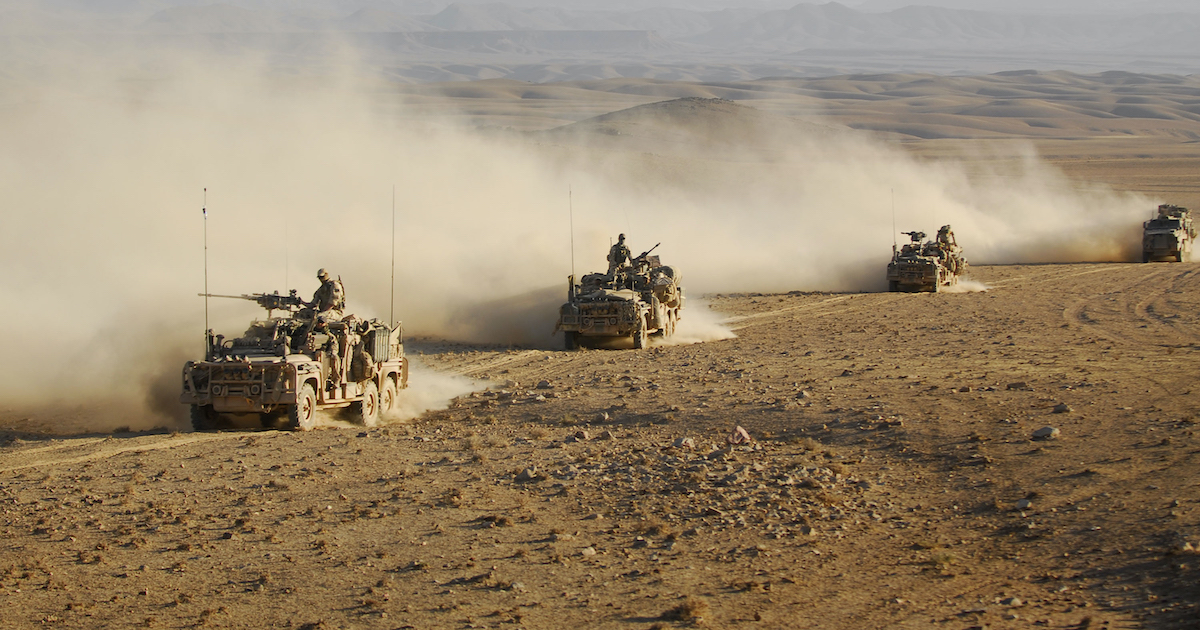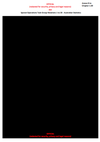The unanswered questions from Australia’s harrowing war crimes report
Allegations of war crimes by Australian special forces in Afghanistan have been substantiated by the Australian Defence Force (ADF). Here's what it means for the future of the country's Special Operations Command

Editor’s Note: This is an opinion column. The thoughts expressed are those of the authors.
It is now a historical fact: Allegations of war crimes by Australian special forces in Afghanistan have been substantiated by the Australian Defence Force (ADF).
The news came right from the mouth of the Chief of Defence Force Gen. Angus Campbell himself: there is, as Campbell said during a recent press conference, “credible information to substantiate 23 incidents of alleged unlawful killing of 39 people by 25 Australian special forces personnel.” Resolved, at least, is the old question of whether war crimes occurred at all. This was already well-established in the media, but we now have confirmation from the ADF itself. The particulars of each incident are now a matter for the police and the courtroom, but the numbers speak for themselves — these were not isolated incidents.
In some ways, however, the release of this report raises more questions than it answers. The new questions revolve around three core themes: the degree of knowledge of war crimes by commanders, the scale of the problem among “shooters”, and the existential standing of Australia’s special forces units moving into the future.
Command
The immediate question that stands out is: how much did the perpetrators’ commanding officers know, and when did they know it? After all, Gen. Campbell was in command of Australians in Afghanistan in 2011. Gen. David Hurley, Australia’s current head of state, also sent out a special directive about “the war crime of murder” to his troops in 2013. More damning still, in a now-infamous photo of Australian troops flying a Nazi flag, a currently-serving brigadier is standing off to the side next to the vehicle. Fittingly, he is looking away.
“Commanders set the conditions in which their units may flourish or wither,” wrote Justice Paul Brereton, the author of the just-released Inspector-General of the ADF report. Even if commanders did not know, Brereton still held them morally responsible. Assistant Inspector-General David Whetham, another contributor to the report, described the command climate as “fractured, compartmentalized and dysfunctional”. This is in keeping with what media reporting had already established. As one Australian special operations officer put it to me, the leadership style was one of “apathy,” fostering an environment in which “troops were set up to fail.”
So how much did they know? How much did they choose not to know? What institutional walls did they knowingly erect that prevented them from knowing? And who among the officers must be held responsible?
Based on the publicly available information, Justice Brereton appears to have exonerated Gen. Campbell’s headquarters in the Middle East, Joint Task Force 633. National-level commanders like Gen. Hurley are also absolved. Nevertheless, we know from Hurley’s directive that at least some information was making its way upstream. More crucially, at least three incidents connected to Gen. Campbell’s tenure in 2011 remain redacted. We do not know whether those allegations were substantiated or unsubstantiated, but it seems at least possible that there are more details to follow.
Beyond legal culpability, there also lies the responsibility to address the war crimes in retrospect. The Chief of Defence Force has tackled some of the issues head-on: in 2018, General Campbell’s decision to ban “death symbols” in the ranks was a proactive way to crack down on cultural problems within the ADF, particularly within special forces. Similarly, by any objective measure, General Campbell’s Thursday statement accompanying the report was praiseworthy. On stage, he was transparent, self-effacing, and genuinely contrite.
Except in one domain – troop data.
The scale of the probem
Comprehensive troop data is important to understand the scale of the problem. To contextualize the 25 perpetrators, Gen. Campbell emphasized that more than 3,000 soldiers had served in Special Operations Task Groups (SOTG) in Afghanistan. But this is not the correct sample size: As Gen. Campbell must know, Australian SOTGs had a “tooth-to-tail” ratio of about one support staff for every combat troop — and as any soldier will know, the real population in question with respect to war crimes is the population of “shooters,” the operators conducting high-value target missions in the field. This much-lower figure was omitted by Gen. Campbell, which in turn served to minimize the scale of the problem.

Additionally, the incident statistic of 23 substantiated cases likely only represents the most egregious murders and executions. Questions still remain about what one 2nd Commando Regiment soldier called “reckless” killings. Indeed, one damning passage in the report describes how some aspects of the targeting process (a life-and-death analytical task that usually requires teams of intelligence staff) was handed off to patrol commanders — meaning that the killers were also deciding who should be killed. This bizarre state of affairs thoroughly upturns Gen. Campbell’s criticism of the way that some sadistic patrol commanders accumulated “power”; if anything, it’s quite clear that all the power was freely given to them. How many Afghan non-combatants died because of shoddy intelligence analysis by super-empowered patrol commanders?
The Australian Defence Force must be transparent about excess civilian deaths caused by the SOTGs; we need to know how the murderous sub-culture impacted other areas of the battlespace. But additionally, the net effect of this breakdown of command, control, and values has security implications for Australia’s allies. The indiscipline clearly extended into other domains: for example, in 2014, an Australian special forces signaler in Iraq was ordered by his commander to falsify documents required to access SIPR-Net, a secret U.S. system. The soldier disobeyed, but what does this say about the willingness of Australian special forces leaders to “streamline” the rules, to sidestep much-needed restrictions? Australia’s partners in the Five Eyes intelligence network should be concerned.
Thankfully, some extraordinary Australian voices have emerged from this process. For one, the Australian public owes a great debt of gratitude to Dr. Samantha Crompvoets, the “outsider” sociologist who first uncovered the brutal truth during an internal culture survey. Then of course there are the whistleblowers themselves. The majority are former support staff who served in medical, signals, and legal roles, brave men like Braden Chapman, Dusty Miller, David McBride, and the late Kevin Frost, who died by suicide last year. Frost was one of the few “shooters” to go on the record in the media.
How representative are these whistleblowers? Is this caliber of moral courage the norm among shooters in Special Operations Command or are they just outliers? Opinions vary. In any case, Assistant Inspector-General Whetham dismisses the “tiny number of “bad apples’” theory as a full explanation for what happened.
The future
This brings us to the question of the institution’s future. No one doubts that steps of redress are or will be taken. Whole task groups are likely to be stripped of their Meritorious Unit Citations. Commanders of these formations will have medals taken from their chests as well. Justice Brereton also made a number of recommendations surrounding training, all of which are likely to be implemented. But will these changes be enough?
More major changes to Australia’s structurally-isolated special forces have certainly been floated. Indeed, it’s noteworthy that there is a close temporal correlation between the raising of a separate Special Operations Command in 2003 and the beginning of the pattern of war crimes. The chronological scope of the Inquiry is almost perfectly superimposed on top of the Command’s infancy.
Assuming that integrating special forces with the regular force is now unlikely, will such atrocities happen again?
There are, unfortunately, significant anecdotes that suggest the problematic culture hasn’t been addressed.
Earlier this year, an ABC News investigation uncovered an Australian special operator-run Instagram page which, among other things, made light of war crimes through memes, videos and music remixes. One of these videos used an ISIS execution video as a template. Hashtags appended to this extreme content included terms like #slaycation and #highvelocityatrocity.
Perhaps even more concerning are anecdotes from current Australian operations. Last year, on a multi-national counter-terrorism mission called Operation Gallant Phoenix, an Australian SASR officer was observed bragging about “kills” and showing pictures of dead people on his phone to soldiers from other countries. Clearly, cultural change within Australia’s Special Operations Command has a long way to go.
With all this considered, three things are certain. We need answers to the following questions. How much did commanders know? How much did they “know without knowing”? That is, what did they know by inference? What was the true scale of Australia’s war crimes problem? And finally, is Australia’s Special Operations Command still tenable as an organization to Australians and their allies?
I suspect the answers to all those questions do not look kindly on the current arrangements.
Related: Why did Australian special forces pose with a Confederate flag in Afghanistan?